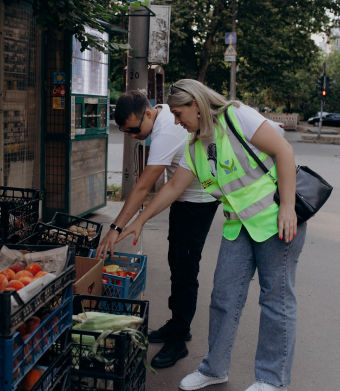

for whom
Veterans and Civilians with Vision Loss
program goal
To improve the quality of life for veterans and civilians with vision loss through adaptation to a new environment after injury.
program duration
1.5 months


Main program directions
Psychological Assistance
Individual, couple, and group therapy to address emotional challenges caused by vision loss and traumatic events. The program focuses on restoring a sense of security, stabilizing emotional states, and developing strategies to overcome life difficulties.
Mobility and Orientation Training
Teaching participants to navigate their surroundings using preserved senses and assistive tools. Training includes route planning, public transportation use, and safe movement in urban areas.
Physical Therapy
Individual sessions to improve endurance, strengthen health, restore lost motor skills, and enhance balance, promoting independence and physical activity.
Digital Skills Training
Participants learn to use modern technologies such as computers, mobile devices, and specialized software for visually impaired individuals, including GPS navigation systems for better mobility.
Individualized Approaches to Complex Eye Diseases (Glaucoma, Uveitis, Retinal Diseases)
Introducing comprehensive diagnostics and innovative treatment methods.
Wellness Programs and Leisure Activities
Optional activities include cultural events, creative workshops, and rehabilitation with animals (e.g., equine therapy).
Key Objectives
Development of social adaptation and integration skills.
Psychological support to restore emotional balance and find new life purposes.
Support and training for family members and caregivers.
Physical therapy to improve overall health and restore physical capabilities.
Psychological support for families to enhance emotional assistance to their loved ones.
Training in mobility and spatial orientation using special tools, such as tactile canes.












